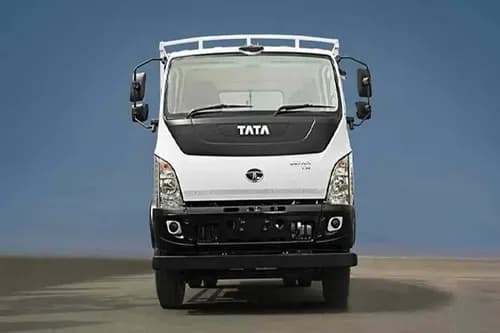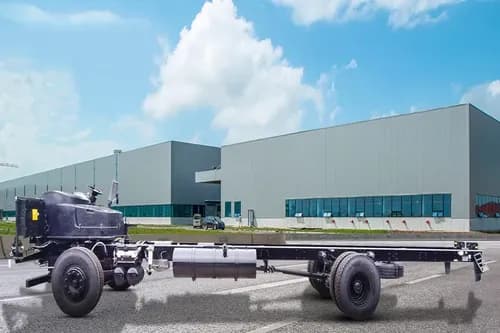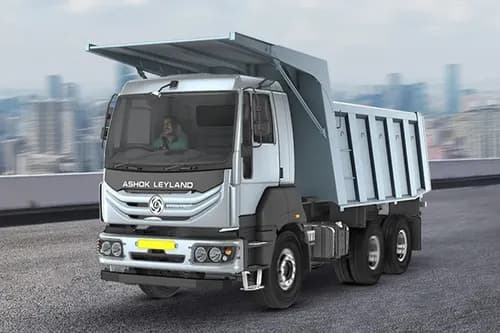Ad
Ad
Ad
Sericulture: From Silkworm to Silk
Silkworms produce silk through a natural process. They have specialized glands in their heads that secrete a liquid protein called fibroin. In this article, we will discuss about the Sericulture and its process.

Silk farming, also known as Sericulture, is the cultivation of silkworms to produce elegant and delicate silk fibres. Silk is known for its shine, softness, and durability. Sericulture, or silk farming, is a process that needs precision and expertise.
Farmers and craftsmen involved in sericulture must have a deep understanding of the silkworm life cycle, from egg to larva to cocoon. The cultivation of mulberry trees plays a crucial role in ensuring a healthy silkworm population. Mulberry trees are the primary food source for silkworms.
Sericulture: The Silk Farming
Sericulture is the process of rearing and cultivating silkworms to produce silk. It involves different stages, including the hatching of silkworm eggs, feeding the larvae with mulberry leaves, and harvesting the silk threads spun by the silkworms.
These threads are then carefully untangled, spun into threads, and woven into fabrics. Sericulture plays a significant role in the textile industry, particularly in countries like China and India. After harvesting silk cocoons, twisting the silk into threads for textiles and various products.
Silk production in India
India is the world's second-largest producer of silk. India has the distinction of being the only country that produces all five commercial silks, namely mulberry, tropical tasar, oak tasar, eri, and muga, the latter of which is unique and exclusive to India.
Mulberry sericulture is mostly practised in the major silk-producing states of Karnataka, Andhra Pradesh, Assam and Bodoland (Kokrajhar, Chirang, Baksa, and Udalguri districts of Assam), West Bengal, Jharkhand, and Tamil Nadu. The North East region produces four types of silk, namely Mulberry, Oak Tasar, Muga, and Eri. The NE region accounts for 18% of the overall silk output in India.
Varieties of silk in India
Some famous varieties of silk produced in India include:
- Muga Silk from Assam.
- Banarasi Silk from Uttar Pradesh.
- Baluchari Silk from West Bengal.
- Bhagalpuri Silk from Bihar.
- Sambalpuri Silk from Odisha.
- Kancheepuram Silk from Tamil Nadu.
- Mysore Silk from Karnataka.
- Paithani Silk from Maharashtra.
- Patola Silk from Gujarat.
- Mulberry Silk.
- Tropical Tasar Silk.
- Oak Tasar Silk.
Also Read: Bamboo Farming in India - The Process, Requirements and Profit
When and by whom was silk invented?
Silk was invented in ancient China around 2700 BCE. This silk was invented by the Chinese empress Xi Ling Shi, who found silkworms spinning their cocoons and unravelled the threads to create the first silk fabric.
Silk holds a special place in the history of ancient China, where its production was guarded secret for centuries. The Silk Road, a network of trade routes connecting the East and West, facilitated the exchange of silk, spices, and cultural ideas, shaping the course of history.
Chinese silk, often referred to as China silk, is a textile famous for its quality and historical significance. It is crafted from the fibres of the silkworm cocoon, known as sericulture, and has been produced in China for over 5,000 years. This delicate and smooth fabric is a preferred material for high-end clothing, textiles, and home furnishings. Chinese silk is an enduring symbol of China's rich cultural heritage and craftsmanship.
Requirements For Sericulture Farming/Silk Farming
As we all know, the silk industry has been flourishing. If you want to start a silk farming business, then this article is for you. For those aspiring to enter the silk business, here are the essential requirements that are required to start a Sericulture Farming:
1. Land: The very basic thing required for sericulture farming is the land. On this land, Mulberry leaves, the primary food source for silkworms, are grown. The choice of land is of paramount importance, and it should be carefully selected based on the region's climate, rainfall, and suitability for mulberry cultivation.
2. Mulberry Foliage: The type of mulberry foliage plays a crucial role in the success of a sericulture business. There are various categories of mulberry plants, such as Kanva-2, S-13, S-34, and more. The selection of the appropriate mulberry foliage should be based on the specific conditions of the land and the climate of the region.
3. Silkworm Rearing Home: Within the sericulture farm, a designated area known as the "silkworm rearing home" is a must. This is where silkworms are nurtured and raised to maturity to produce precious silk cocoons.
4. Rearing Equipment: The tools and equipment used for silkworm rearing are essential for a silk production business. These include rearing beds, mountages, chopping boards, and other specialized equipment designed to facilitate the healthy growth of silkworms.
5. Silkworm Eggs: Silkworm eggs are the raw material for the entire silk production process. The selection and quality of silkworm eggs are critical to achieving the desired yield and quality of silk.
6. Farm Equipment: To ensure the successful growth of mulberry leaves and their efficient harvesting, farm equipment is indispensable. These tools are used to harvest the mulberry leaves, which are the food source for silkworms.
These requirements serve as the cornerstone of a sericulture farming or silk business. Silk entrepreneurs should carefully consider these elements when planning to enter the world of silk production. The combination of the right land, mulberry foliage, rearing facilities, equipment, silkworm eggs, and farm equipment can lead to a prosperous and sustainable silk venture.
Steps of Silk Production
Silk is a natural fibre. Silk is made by silkworms, primarily the Bombyx mori species. The process of making silk is explained in several steps:
Silkworm Rearing: The process begins with the cultivation of silkworms. These small, white larvae are typically raised in controlled environments, with mulberry leaves as their primary food source.
Cocoon Formation: Silkworms spin protective cocoons around themselves as they prepare to transform into moths. They produce a fluid substance that hardens into silk fibres as it comes into contact with the air.
Harvesting Cocoons: After about two to three weeks, the silkworms complete their pupal stage and create fully-formed cocoons. To obtain the silk, the cocoons are harvested before the moths emerge, as the emerging moths would break the long silk fibres.
Boiling and Unwinding: The collected cocoons are boiled in hot water to soften the sericin, a protein that holds the silk threads together. This process also helps in killing any pupae that may still be inside. The heat softens the sericin, a protein coating on the threads, allowing them to be untangled. To produce long, continuous silk threads, the cocoons are boiled in hot water.
Spinning: The individual silk threads, which can be as long as 1,600 meters (1 mile) from a single cocoon, are spun together into a thread strong enough to be woven into fabric. Multiple threads are often combined to form the raw silk yarn.
Weaving: Silk yarn is woven into fabric using traditional weaving techniques. The resulting silk fabric can vary in texture, weight, and design, depending on the desired end product.
Finishing: The woven silk fabric is then treated to enhance its texture and durability. This may involve processes such as bleaching, dyeing, and finishing with various techniques to achieve the desired quality and appearance.
The entire process of making silk, from rearing the silkworms to producing the finished fabric, requires manpower with specialized knowledge and skills. The silk fabric is known for its smooth texture, natural sheen, and exceptional comfort.
What silk is made of?
Silk is made of the silky threads produced by the silkworm, the larva of the silk moth (scientifically known as Bombyx mori). Basically, silkworms produce a natural protein called Fibroin. This protein is fine and has unique properties that make silk a desirable fabric. These silkworms spin cocoons made of fine and delicate silk fibres.
To harvest silk, the cocoons are boiled to soften the sericin. Once softened, the threads can be unravelled and woven into the fabric we know as silk. Silk is soft, lightweight, and has a natural sheen, making it comfortable to wear and aesthetically pleasing.
Mageweave Cloth Farming
Mageweave Cloth farming is a way to gather a special kind of cloth called Mageweave in a video game, often in games like World of Warcraft. This cloth is valuable because it's used to make powerful gear or sell to other players for in-game money. Just remember that Mageweave Cloth farming can take some time and patience, but it's a way to earn valuable resources in the game.
Are silkworms killed to make silk?
Yes, silkworms are killed to form silk. The cocoons spun by silkworms are boiled or heated to soften the sericin and make it easier to unwind the silk threads. Unfortunately, this process results in the death of the silkworms inside the cocoons.
This is a common practice in the silk industry, but there are alternative methods such as "peace silk" or "ahimsa silk" that aim to harvest silk without harming the silkworms, though they are less common.
Also Read: Irrigation System: Methods, Types, and Significance
How Do Silkworms Make Silk?
Silkworms produce silk through a natural process. They have specialized glands in their heads that secrete a liquid protein called fibroin. As they spin a protective cocoon around themselves, the liquid silk protein is exposed to air and hardens into silk fibres. The silkworms move their heads in a figure-eight pattern, producing long, continuous threads of silk.
Features & Articles
Nighttime Driving Tips For Truck Drivers
If you're a truck driver who frequently drives at night, then this article is for you. It provides Nighttime Driving Tips that can be useful for your safety....
21-Nov-24 12:32 PM
Read Full NewsTop 5 Features of BharatBenz trucks in India
BharatBenz sells thousands of trucks every month because of their reliability and high quality. In this article, the Top 5 Features of BharatBenz trucks in India are list...
19-Nov-24 01:24 PM
Read Full NewsTop 10 Apollo Truck Tyres: Prices, Sizes and Features
Choose Apollo truck tyres for durability, safety, and performance. Proper maintenance ensures efficiency across long-haul, regional, and off-road applications....
18-Nov-24 01:11 PM
Read Full NewsWinter Truck Lubrication: 7 Simple Tips for Smooth Performance
For winter, it’s essential to use low-viscosity engine oil. Low-viscosity oils are thinner, which helps them circulate more easily when the engine is cold....
14-Nov-24 01:35 PM
Read Full NewsBenefits of Buying Euler Electric Three-Wheeler in India
This article explores the various benefits of buying Euler Electric three-wheelers in India....
13-Nov-24 01:06 PM
Read Full NewsBest Tips for Driving a Truck Safely in Fog
In this article, you’ll learn about the best tips for driving a truck safely in fog....
11-Nov-24 12:42 PM
Read Full NewsAd
Ad
Registered Office Address
Delente Technologies Pvt. Ltd.
M3M Cosmopolitan, 12th Cosmopolitan,
Golf Course Ext Rd, Sector 66, Gurugram, Haryana
pincode - 122002
Join CMV360
Receive pricing updates, buying tips & more!
Follow Us
COMMERCIAL VEHICLE BUYING BECOMES EASY AT CMV360
CMV360 - is a leading commercial vehicle marketplace. We helps consumers to Buy, Finance, Insure and Service their commercial vehicles.
We bring great transparency on pricing, information and comparison of tractors, trucks, buses and three wheelers.

























